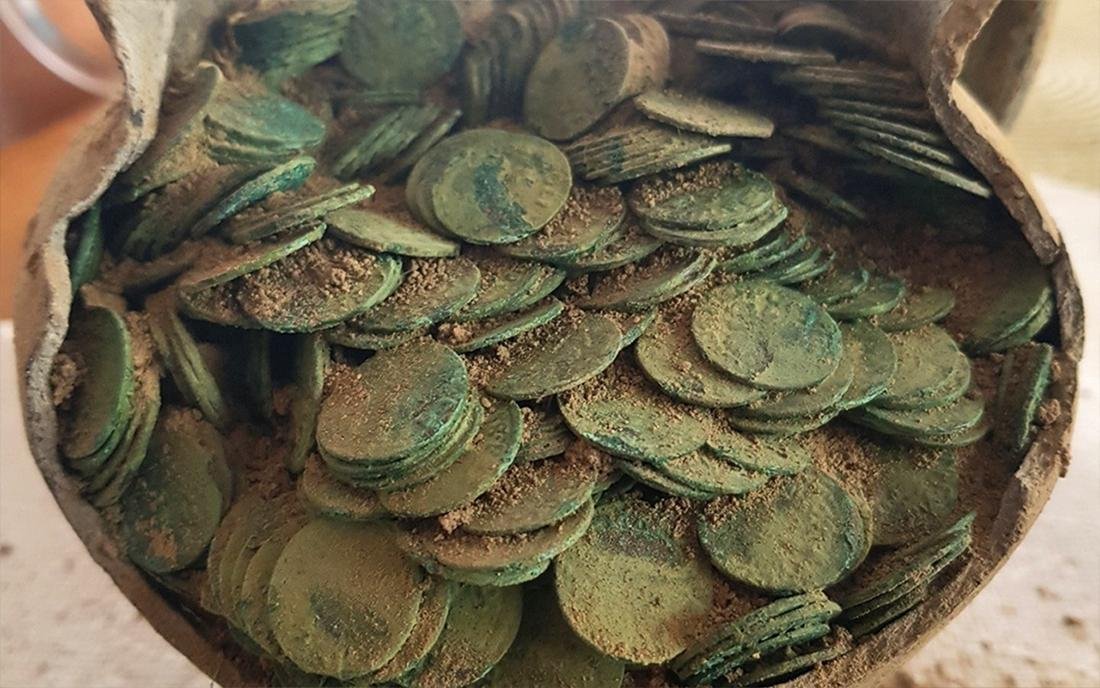A metal detectorist In Poland searching a farm for tractor parts discovered a hoard of about 1,000 copper coins.

The discovery was made close to the village of Zaniówka by a local man, Michał Łotys. The coins had been placed in a siwak, a one-handled jug with a short neck.
it is forbidden to use a metal detector to search for buried relics without a permit in Poland, therefore Lotys notified the Provincial Office for the Protection of Monuments (WUOZ) in Lublin. They visited the farm the next day.
Dariusz Kopciowski, a provincial heritage conservator, said that the most of the Polish and Lithuanian coins were minted between 1663 and 1666.
About 60 of the coins had been bonded together due to metal oxidation, he added.
More than 550 million of these coins, known as boratynki today after Titus Livius Burattini, a manager of the Kraków mint in the 17th century, were minted after Poland had been devastated by wars with Sweden and Russia.
According to Live Science, Burattini, was a famed inventor and polymath who introduced copper coinage to the Polish-Lithuanian Commonwealth because they were much cheaper to make than the existing silver coins of the realm.
“Around 1,000 boratynki would pay for two pairs of shoes,” Kopciowski explained. He believes that the person who buried the hoard of coins may have been killed by enemy forces or may have moved before the treasure could be found.
The coins will be sent to the Southern Podlasie Museum in Biała Podlaska.
























